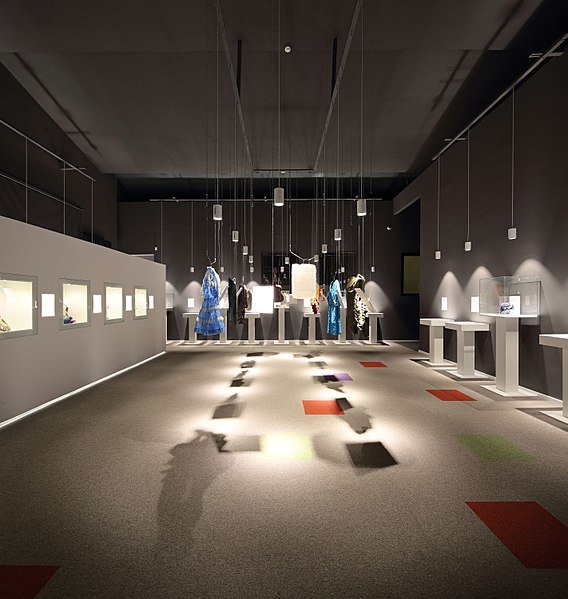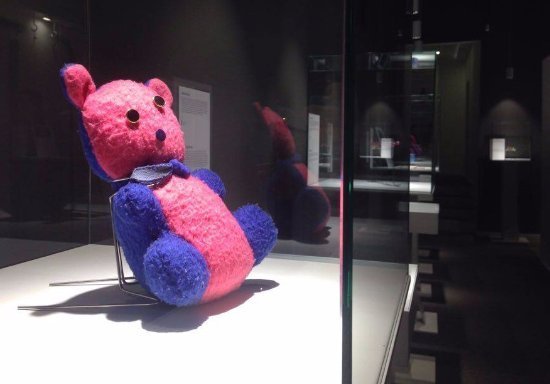The War Childhood Museum in Sarajevo | A Harrowing Visit
This post was last updated on 09/08/2021.
What was a war childhood for you?
…waiting for Grandpa to come back from the market, but he still hasn’t.
…a war childhood is when you have a crush at school, and she is killed by a shell.
…childhood is childhood, even during a war…instead of napkins and chocolate wrappers, I collected shell shrapnel.
These were just some of the answers given to Jasminko Halilovic, a war child himself, when he started asking other survivors of the Bosnian War, who had been children during the conflict, to submit their stories to him for his book, War Childhood.
Beginning in 2010, Halilovic used an online platform to collect memories from his peers about what a war childhood was for them. Over 1000 submissions later, Halilovic assembled them all into a book, which was published in 2013.
Ranging from light hearted tales of collecting shrapnel in the park to poignant recollections of how ‘A sniper killed my brother. It killed my childhood, too,’ War Childhood looks at the Bosnian War from a unique angle – the eyes of its children.
Four years after the book’s release, Jasminko Halilovic opened the War Childhood museum in Sarajevo, a museum that Halilovic believes is the only one of its kind in the world and is one of a number of museums in Sarajevo that pay tribute to the suffering of the Bosnian people during the war.
Best Museums in Sarajevo – The War Childhood Museum
Having been in Bosnia and Herzegovina for a few days and learning about the country’s tragic history, I was desperate to learn everything I could.
My first two days in Sarajevo were spent exploring the area with a war veteran and visiting the Museum for Crimes Against Humanity and Genocide.
These experiences had affected me so much that I simple couldn’t pass on the opportunity to visit another of the important museums in Sarajevo – The War Childhood Museum.

A War Childhood
For people like myself, who gave grown up sheltered and naïve to the realities of life in a warzone, it can be difficult to comprehend just what is meant by the phrase ‘war childhood.’
I want to share some statistics with you, taken from a UNICEF report.
The report concluded that of the 65,000 – 80,000 children who were living in the city of Sarajevo during the siege:
40% had been directly shot at by snipers
51% had seen someone killed
39% had seen one or more family members killed
19% had witnessed a massacre
48% had their home occupied by someone else
73% had their home attacked or shelled
89% had lived in underground shelters
Just let that sink in for a minute.
When faced with numbers like these, it is easy to see how War Childhood is such an important project.
The siege of Sarajevo impacted every single citizen there, and shaped many a childhood.
This is where the War Childhood museum comes in.

Inside One of the Most Important Museums in Sarajevo
The War Childhood Museum is comprised of a collection of over 4000 objects which were sent to Halilovic by his fellow war children.
In order to allow every single object the recognition it deserves, the War Childhood Museum displays 50 objects at a time on a constant rotation.
Every object is displayed on a pedestal in a glass case beside its owner’s explanation of what this object means to them, which is the really hard-hitting part of the exhibition.
When I visited, the museum was quiet – I guess the perks of visiting Sarajevo in the summertime are that everybody wants to be out enjoying the sun rather than exploring all of the museums in Sarajevo!
As a result I was able to take my time, reading the descriptions of every single object, watching the documentary film that plays on a constant loop, and reading the War Childhood book (although the book is available for purchase, there are also copies left out at the end of the exhibition for visitors to flick through).
Although every object in the War Childhood Museum was heart breaking in its own way, some of the ones that stood out to me were:
– a scrap of material purchased to make a prom dress that was never needed
– a red bike that carried its rider to safety as grenades began to fall
– a half-finished letter that a child’s mother had been in the middle of writing as she was blown up in her kitchen
– some drawings of Disney characters that a young girl’s sister used to draw before she answered the door one day and was killed by a shell.
Although statistics give us the facts about the Bosnian war, there is something very jarring about looking at these everyday items and reading about how they featured into the owner’s personal history.

The War Childhood Museum – Final Thoughts
However, for almost every story submitted to Halilovic – 4000 of them – another child died before they could have the chance to tell theirs.
More than 3500 children were killed in the Bosnian War between the years of 1992-1995 and it is important to remember that the tragic tales displayed in the War Childhood Museum are those of the ‘lucky ones’ (if anybody can be lucky in war).
Not only then, is the War Childhood Museum important from an educational perspective, but its existence also stands as a mark of respect to Bosnia’s war children themselves – those who submitted their stories, and those who never got to.
Although it is a simple presentation to match the simple concept, the effect of the exhibition is incredibly powerful.
It may not be not as visually shocking or graphic as the nearby Museum of Crimes Against Humanity and Genocide, but the War Childhood Museum plays a very important role in educating people visiting Bosnia about what life was like for children during the war, and I think that both of these museums in Sarajevo complement each other beautifully.
I am a firm believer that we have a duty to learn about a country’s past when we visit it, especially if that past is as recent and as tragic as this one.
Sarajevo definitely has lots of beautiful sights to see, and you could easily spend your entire time there driving to impressive viewpoints and sipping Bosnian coffee in the market, but your appreciation of Bosnia will increase tenfold if you take the time to visit some of the museums in Sarajevo and learn about what the people living here went through not so long ago.
Useful Information
The 2018 Council of Europe Museum Prize – one of the most prestigious awards in the museum industry -was awarded to the War Childhood Museum as part of the European Museum of the Year Awards.
The War Childhood Museum is open Monday-Sunday from 11am-7pm.
It can be found at Logavina 32, in the centre of Sarajevo.
Because the Museum is located in the historic city centre, parking space is limited. If you require mobility assistance then you can call in advance to reserve a special parking space.
Admission prices are as follows:
– Children 6 and under: Free
– Youths 7-17: 5 KM
– Students: 8 KM
– Adults: 10 KM
– Family pass: 25 KM
Admission to the museum is free the last Thursday of each month, between 5pm-7pm.
The War Childhood Museum is committed to being fully accessible for everyone. It is fully accessible to visitors using wheelchairs and other mobility devices as well as to the visually impaired.
To learn more about the War Childhood project just click here.
If you are staying in Sarajevo for a few days and would like to take part in a tour to learn more about Bosnia’s history, you can find the best historical tours here.
If you liked this article and would like to support my work, please click the button above to donate a couple of bucks and buy me a coffee. The ad revenue that I receive on this website is minimal, so support from my readers enables me to keep creating content that you (hopefully!) love to read.


It kind of reminds me of one exibition at New York Museum.
Carmelatte
Wow this is so sad but so interesting. I recently went to Bosnia and could feel an eerie air seeing all of the abandoned or crumbling homes from the war. I wanted to learn more about it so this is really great insight!
Yeah it was really strange being somewhere that experienced something so bad so recently, with such visible scars. Thank you!